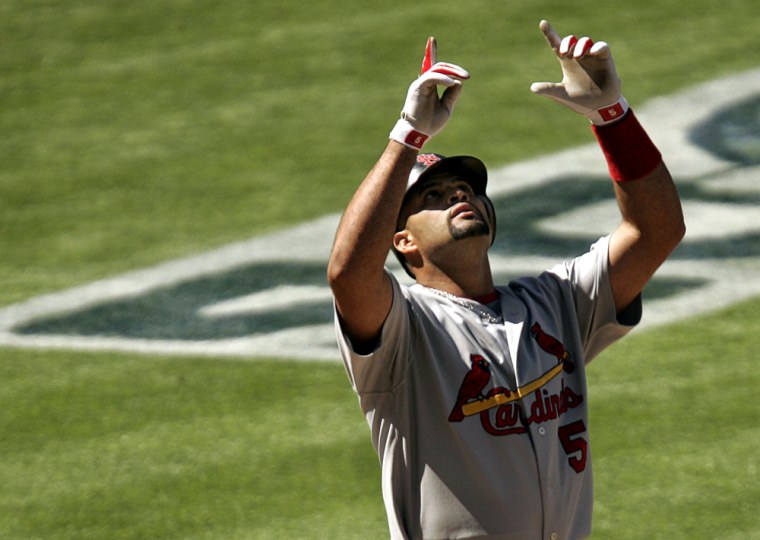Several times, when he was an advance scout for the Chicago Cubs, John Stockstill would furiously write in his notebook on the occasions when Albert Pujols took a bad swing or appeared to misread a pitch, which led to an out. It was not often that Pujols provided such material, so mapping the exact pitch and its location was imperative for any team that expected to face the St. Louis slugger several times during the season. From those meticulous notes, Stockstill, now the Baltimore Orioles' head of professional scouting, formulated a plan on how to pitch to Pujols.
Chicago pitchers studied Stockstill's report at length. When the time came to face Pujols, Cubs pitchers followed Stockstill's advice and, frequently, a baseball would sail over the fence for a mammoth home run.
"You might as well have thrown the report in the garbage," Stockstill said. "Albert Pujols is one of those rare guys that there is no way to pitch to him."
The task of scouting Pujols might become as obsolete a job as a typewriter repairman. Simply put, what's the point?
"If you go out there and hit every spot on Albert Pujols, you'll be a 25-game winner," Dick Groch, the Milwaukee Brewers' director of pro scouting, said. "Because you'll be able to do that on everyone else."
Though he is the most feared hitter in the game, some teams, including the San Diego Padres in Game 1 of the National League Division Series on Tuesday, still choose to pitch to Pujols, with dire consequences. Pujols's 422-foot-home run on Tuesday provided a seismic momentum shift in not only that particular game, but likely for the entire series. The Padres refuse to change their strategy.
"Sometimes you're going to have to pitch to him," Padres Manager Bruce Bochy said. "We don't want a lot of guys on base."
After Pujols bats, there won't be many guys on base either because he will have cleared them off with a double in the gap, or a home run to dead center. But if the Padres continue to be stubborn, is there a way to consistently get Pujols out?
Groch said the only hope is for Pujols to be slumping. During a slump, he often can be handled by inside fastballs and then sliders low and away.
"He'll chase on occasion, but when he's doing that, that's a rarity," Groch said. "But you better not make a mistake, because you've got very little margin for error. He hits mistakes as well as anybody. You hope he's guessing and you hit it in the right spot."
No player switches out of a slump like Pujols though, the scouts say. During a hot streak, Pujols won't be retired on sliders away. He will either not chase the pitch, or he'll reach out and drive it to the opposite field.
"The pitcher is at a disadvantage when facing Albert Pujols," Stockstill said. "He's the type of hitter that gets himself out before a pitcher will get him out."
Pujols's greatest asset is his ability to adjust quickly. Padres super reliever Cla Meredith can vouch for that. On Sept. 25, the first time the two faced each other, Meredith, who led all Padres relievers with a 1.07 ERA and at one point this season had a 33 2/3 -inning scoreless streak, struck out Pujols on a nasty sinker. Two days later, brought in to preserve a lead, Meredith threw the same sinker in almost the same spot and Pujols smashed a mammoth game-deciding home run to left field.
"The hardest thing about him is what to throw him," Meredith said. "You look at how he sets up in the box, and what you think can get him, actually might be his strong suit."
Meredith said he had formulated a new approach in dealing with Pujols, one he declined to reveal.
"You still have the ball in hand and you have to go after him," Meredith said. "But I learned to be a little more careful with him."
Meredith, when asked if he thought the scouting reports given to him had ever worked, cringed and gave a resounding no.
